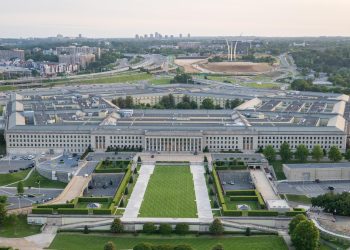US Army, OSAN AIR BASE, South Korea: Even as negotiations continue over North Korea's nuclear posture, U.S. and South Korean officials keep close track of the country's conventional capabilities.
The commander of Combined Forces Command Korea said the North Korean military is a credible threat.
While North Korean rhetoric during the Six-Party Talks has been hot, it has not mirrored activities along the demilitarized zone, Army Gen. Leon LaPorte said during a recent interview here. “For the past 18 months we've had less provocations (from the North Koreans),” he said. “We've had very few incidents along the demilitarized zone.”
North Korea announced in February that they possessed nuclear weapons. The United States, South Korea, Japan, China and Russia have been meeting with the North Koreans in an attempt to get the country to jettison its nuclear program.
The North Korean military has a large standing Army of 1.2 million, with the ability to mobilize another 5 million, LaPorte said. “They have over 12,000 pieces of artillery. A portion of those can range Seoul from where they sit in underground facilities.”
The North Koreans maintain a large stockpile of chemical weapons, and leaders there do not consider chemical weapons of mass destruction. Current North Korean doctrine states that every third round fired would be a chemical round, LaPorte said. The general said the North Koreans have more than 800 missiles that can range the peninsula and beyond.
The North Koreans have a large special operations capability. There are 120,000 soldiers involved. “These are highly trained, well-resourced units that are capable of conducting strategic reconnaissance and direct action,” LaPorte said, noting they train to infiltrate by sea, land and air.
The North Korean air force and navy are an “aged” force, LaPorte said. Still, with nearly 100, the North Koreans have the largest submarine force in the world. Most of the boats are small and would be used for infiltration or mine laying.
The North Korean air force has one squadron of MiG-29s and the rest with older series MiGs. The average North Korean fighter pilot gets 15 hours of flying time per year, less than what U.S. and South Korean pilots log in a month.
LaPorte said he does not believe North Korea has been able to weaponize biological weapons. “But we know they have worked that and are experimenting,” he said.
North Korea has many civil problems. The country's population is literally starving, and power production is limited mostly to the capital of Pyongyang. “But North Korea has a 'military first' policy,” LaPorte said. “And we estimate that they spend one-third of the gross domestic product on their military — and they take that right off the top.”
This means the forces have the money, food and fuel to continue to train. Still, Combined Forces Command has not observed any large-scale ground maneuvers, but it has seen battalion and regimental training events, LaPorte said.
US-China trade war surges, overshadowing Trump climbdown
The US-China trade war intensified Thursday, sending the global economy into unknown territory and dampening relief after President Donald Trump's...









